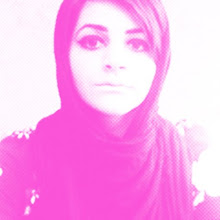



FAMILY: Punicaceae. The genus Punica only has two species: P. granatum L. and P. Nana L., the former mainly cultivated for its fruit and occasionally as an ornamental tree, and the latter only ornamentally as its fruits are inedible.
-Tolerant of drought, salt, ferric chlorosis and active calcium carbonate
-The plant´s needs during winter are small, and the length of winter dormancy is correlated with temperatures below 16ºC. The fruits tend to split if rain falls during the harvesting period
-Pomegranate is a traditional crop in all the countries which border the Mediterranean Sea
-Some trees may live longer than 100 years
-The root is knotty, consistent and reddish, well developed and extremely absorbent in saline soils
-Numerous suckers grow beside the trunk and have to be eliminated occasionally
-The bark, known as pomegranate bark, has traditionally been used for the alkaloids it contains although the trunk and bark of the branches contain similar quantities of the same
-The trunk is more or less round, erect, ramified, with alternate open branches, sometimes prickly at the apex
-The ageing bark shows cracks and takes on a greyish colour. It appears knotted ant twisted. The tree itself varies in appearance from drooping to erect
-The trees usually have only one trunk although in some countries they form various trunks from the suckers which are allowed to grow from the foot of the principal trunk.
-The buds are lateral and are found on the axils of the leaves
-The terminal bud sometimes becomes a thorn, sometimes grows into a flower or cluster of flowers, or simply falls
-Since the plant does not therefore possess real terminal buds, growth has to be from the lateral buds, for which reason the tree is included in the sympodial species
-Leaves are entire, smooth, opposed, with no stipule, sometimes verticillate, hairless, oblong, deciduous and with short petioles
-The fruit is a fleshy berry denominated balausta, thick-skinned, complex, enclosed by the thallus, with various polyspermal cavities separated by tenuous membranous partitions (carpelar membranes)
-The interior is filled with many fleshy seeds, prismatic in shape, with pulpy testa and woody tegmen, very juicy
-The ripe fruit is greenish yellow or brown with reddish areas which may occasionally occupy the whole surface of the fruit
-The tough, leathery skin or rind is typically yellow overlaid with light or deep pink or rich red. The interior is separated by membranous walls and white, spongy, bitter tissue into compartments packed with sacs filled with sweetly acid, juicy, red, pink or whitish pulp or aril. In each sac there is one angular, soft or hard seed.
-Around 600 seeds
-Seeds and surrounding pulp: aril
-Aril: Specialized outgrowth from the funiculus (attachment point of the seed or hilum) that covers or is attached to the seed. It is sometimes applied to any appendage or thickening of the seed coat in flowering plants, such as the edible parts of the pomegranate fruit. The aril may create a fruit-like structure (called a false-fruit). False fruit are found in numerous Angiosperm taxa. The aril is attractive to fruit-eating birds and is non-toxic (all other parts of the yew are toxic), serving therefore to promote dispersal of the seed by birds, which digest the fleshy aril as a food source, and pass the seed out in their droppings.
-The great structural peculiarity consists in the presence of the two rows of carpels one above another, and in the fact that, while in the lower series the seeds are attached to the inner border or lower angle of the cavity, they occupy the outer side in the upper series, as if during growth the upper whorl had become completely bent over.
From here.










































